We know a lot about him as a man because of the abundance of art works he left and his writings. He seemed to realize he would become famous and wanted people to know a lot about him and the pictures he made.
Also ten letters survive that he wrote to his friend Willibald Pirckheimer. They remained lost for 200 years until they were discovered hidden in a wall.
He made a thousand drawings and watercolors and is considered to be the greatest printmaker of all time. He liked making prints because he could make many reproductions of the same picture, and it was a lucrative business. He made a good profit from it. He made over 350 engravings and woodcuts. Connecticut College presents a large collection of Durer woodcuts. Sixty of his oil paintings remain. Frequently he signed and dated his works with his trademark signature
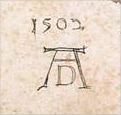
A "self-portrait" is a drawing or painting an artist makes of himself or herself. In 1450, thirty-four years before Durer started making self-portraits Jean Fouquet created a small picture of himself in gold on black enamel. However self-portraits date back to 1365 B.C. in ancient Egypt. We will examine four of Durer's self-portraits.
The first drawing he made of himself was done in 1484 when he was thirteen years old. He used a looking-glass and drew his likeness. He said, "I drew it when I was still a child."
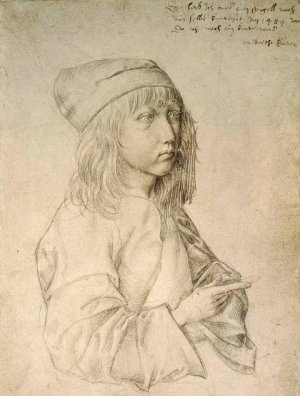
Self-portrait 1484
Enlarge
Enlarge
The first painted self-portrait was done when he was twenty-two years old. He married Agnes Frey in 1494 during this time of his life. They didn't have much money so they lived with his father.

Self-portrait 1493
Enlarge
Enlarge
When he was twenty-six he painted a portrait of himself as a young man dressed in elegant clothes. His friend said the painting was so realistic that Durer's dog barked and wagged his tail when he saw it.
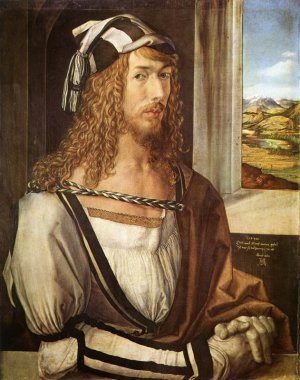
Self-portrait 1498
Enlarge
Enlarge
The next portrait was painted when he was twenty-eight years old. It may have been inspired by something he wrote in his own notes, "the more we know, the more we resemble the likeness of Christ who truly knows all things".
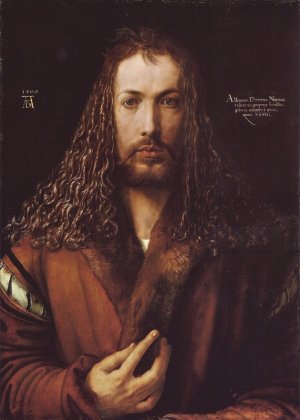
Self-portrait 1500
Enlarge
Enlarge
In 1494 he visited Venice. When he was in the Alps he made watercolor drawings as he rode along in the carriage, capturing the view he saw from the widow. He would make other trips to Italy at a later date.
The featured work on this page is A Young Hare which was done in watercolor in 1502. The hare looks very realistic
He died in 1528 at the age of fifty-six.
Today if you go to Nuremberg you can visit the four-story Durer House and observe museum workers reproducing some of Durer's woodblock prints.
This biography was written by Patsy Stevens, a retired teacher.
References:
Kostner, Thomas, and Lars Roper. 50 Artists You Should Know. New York: Prestel, 2006.
Order
Wilder, Jesse Bryant. Art History for Dummies. Hoboken, NJ: Wiley Publishing Inc, 2007.
Order

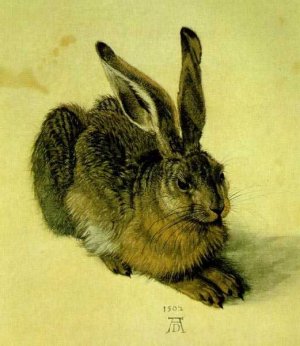
 A frequent question:
A frequent question: